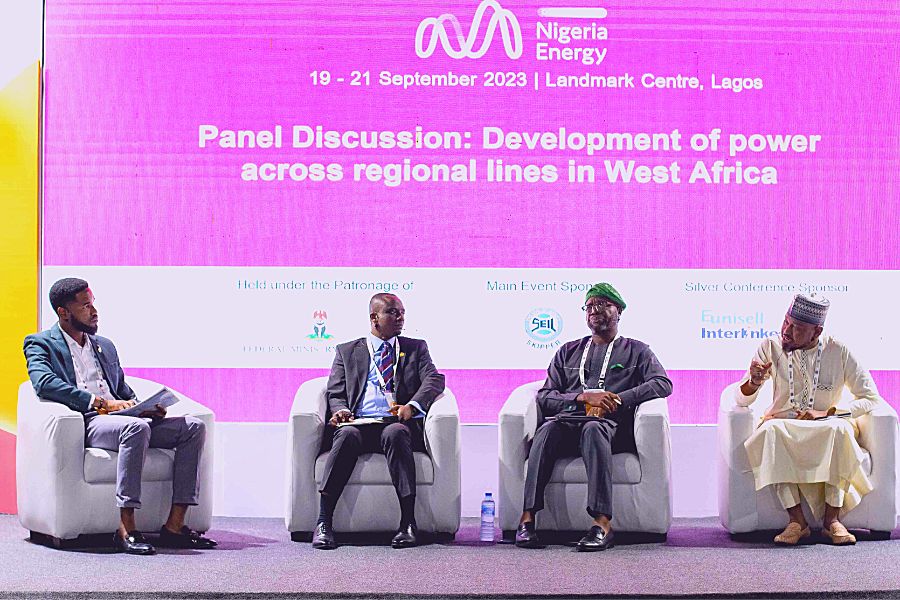Nigeria Energy: Improving energy trade across West Africa

Leadership Summit brings together key power sector stakeholders from Ghana and Nigeria, looking at specific projects improving connectivity across the region; all will be importers and exporters
On Day 2 of Nigeria Energy last week, key power sector stakeholders from Ghana and Nigeria discussed efforts to improve inter-regional electricity connection, notably the West African Power Pool. The discussions highlighted the current approach in Ghana and Nigeria and also proposed measures that both countries can take to improve electricity trade across the region.
Their discussions occurred during the Nigeria Energy Leadership Summit in Lagos.
All countries will import/export
Mr. Ali Bukar, General Manager, Regulations and Compliance at the Transmission Company of Nigeria, noted that no country is going to be the sole exporter of energy. All countries will have to import and export energy based on the prevailing cost of energy generation sources. For instance, during periods of low gas prices, countries with gas plants can export more energy and during periods of water availability countries with hydroelectric power plants can export more.
Mr. Bukar noted that some projects are already being implemented to improve energy trade.
An example is the North Core, a 330 KV 853km project from Nigeria to Burkina Faso, through Niger.
The transformational Côte d’Ivoire–Liberia–Sierra Leone–Guinea (CLSG) interconnection project—which will enable the LSG countries to import cheaper electricity from Côte d’Ivoire—is also improving connectivity across the region.
Ghana’s coordinated approach
Mr. Hanson Monney, the Head of Power Generation and Transmission Unit, Ministry of Energy, Ghana, highlighted Ghana’s efforts towards becoming a net power exporter. Mr. Monney stated that “for Ghana, it is a calculated effort from policy to infrastructure.
“Our policy is to ensure that in future we will be a net exporter of power.”
In 2019, Ghana completed the Kumasi–Kintampo–Tamale–Bolgatanga Line, a 330kV 550km transmission interconnection line that facilitates the export of up to 50MW to Burkina Faso. Ghana is carrying out studies on a second transmission line to Côte d'Ivoire to assess the electricity markets in Liberia, Sierra Leone and Guinea.
Ghana is also building the generation capacity to service these markets. Its generation roadmap involves siting generation plants where the power generated can easily be exported. For instance, it relocated a plant to the north to stabilize the energy supply in the middle of the country and improve exports to Burkina Faso.
Ghana is also extending a gas pipeline from the coast to the middle and north of the country. This will enable the country to build plants along the pipeline corridor for energy export. The grid strengthening activities also help in renewables integration. Ghana will develop solar plants in its northern regions–where solar radiation is high–for export. Ghana is also setting up regulations to encourage private sector participation in the energy trade.
The potential across the region
In 2017, Power Africa estimated that full regional integration across West Africa could result in a total benefit of around $150 billion for the region.
Barr. Eyo Ekpo, the Energy Lead-Transition Team, United Kingdom – Nigeria Infrastructure Advisory Facility (UKNIAF) noted that the economic challenges facing the region are tied to Nigeria’s development. Nigeria will be a major driver of regional integration; hence it needs to grow its domestic energy market which will result in a larger market for the power pool. The different countries in the region will also need to focus on and develop the energy resources with the most potential for them.
Barr. Ekpo noted that the region has a “natural mix of energy resources with huge potential, however putting together the potential has eluded the region.”
The eastern part (Nigerian axis) of the region has huge gas resources and can prioritize gas to power. The western part (Senegal-Guinea axis) has huge hydroelectricity potential and can develop large-scale hydropower plants for export. In the Sahel, solar power plants can provide much-needed clean energy to augment supply across the region.
He emphasized that policymakers need to develop a framework that prioritizes the development of these resources in different parts of the region.
Energy & Utilities has reported widely on new power development in West Africa, in Benin and other West African countries.
A new report on West Africa is now out from Informa Energy & Utilities. It combines a useful overview of each country combined with close looks at four key sectors across the region.
Energy & Utilities - Middle East and Africa Market Outlook Report 2024.
This must-have report for industry players offers a thorough understanding of the latest developments, challenges, and opportunities in the region, supported by data, analysis, and expert insights.


.png)
.png)

